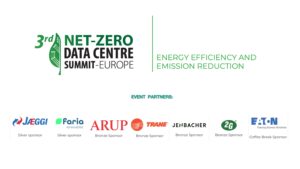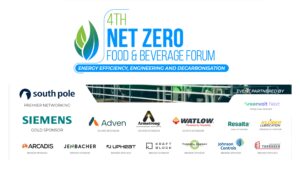Industrial heat recovery systems in chemical manufacturing facilities are a key but under-exploited resource for energy efficiency. Conventional heat recovery design methodologies are dominated by simplified models. These often fail to capture intricate thermodynamic interactions. New 3D modeling technologies provide a groundbreaking method to visualize, simulate, and optimize such thermal flows with unprecedented fidelity. By generating digital twins of whole chemical processing systems, engineers are now able to detect inefficiencies that elude traditional analysis techniques. This article discusses how 3D modeling technologies are revolutionizing chemical heat recovery.
Revolutionizing Chemical Heat Recovery Through Digital Simulation
The energy-intensive processes of the chemical industry offer large potential for optimization with advanced digital technologies. Advanced simulation tools provide unprecedented insight into intricate thermal dynamics. These were impossible to examine with traditional tools in the past. This section discusses the simulation technologies at the heart of the heat recovery revolution:
Virtual Prototyping for System Design
Digital twins allow engineers to simulate various heat recovery designs without altering installed hardware in the physical sense. Computational fluid dynamics (CFD) is employed to support the models to simulate how thermal energy moves. This is through vessels, pipes, and heat exchangers under various operating conditions. Furthermore, this feature is especially useful during retrofitting old chemical plants. This is where available space cannot support conventional heat recovery opportunities. Moreover, engineers can even place new heat exchangers virtually and redirect pipelines, and then evaluate several configurations. This is to optimize performance without disturbing production or investing a lot of money in physical modifications.
Real-Time Thermal Flow Visualization
Current 3D modeling software generates color-coded visual maps. These illustrate temperature gradients, thermal losses, and patterns of energy flow through chemical processes. These visualizations expose previously concealed inefficiencies. It includes hot spots, thermal stratification in vessels, or poor heat transfer zones. Moreover, engineers determine exactly where insulation enhancements, heat exchanger changes, or process changes would yield maximum efficiency gains through examination of these graphic plots of data. Additionally, the visual nature of intuitive form also enables communication of technical complexity to stakeholders without technical expertise. This facilitates effective investment to generate more universal organizational support.
Cross-Process Heat Integration Modeling
3D modeling is best at discovering latent chemical heat recovery potential between what appear to be unrelated processes within a chemical plant. Furthermore, engineers reveal synergies lost in the fragmented analyses of conventional siloed approaches. This is achieved by superimposing all the thermal sources and sinks throughout a whole plant onto a single 3D model. For instance, modeling may find that distillation of low-grade waste heat can be used to preheat feedstock for a physically remote reactor. This generates value from what was wasted thermal energy in the past. In addition, such cross-process integrations frequently yield the highest efficiency gains but demand full-modeling capabilities to find and enact them correctly.
Predictive Maintenance Integration
Next-generation 3D thermal models can integrate real-time sensor data. This is to identify initial indicators of degradation of heat recovery systems. By creating thermal profiles of equipment as a base point, such systems indicate abnormalities. These indicate scale deposition, fouling in heat exchangers, or declining insulation. This is long before typical maintenance regimes would detect these kinds of issues. Moreover, this early prediction enables maintenance teams to counter efficiency-destroying problems just in time. As a result, it prevents both losses in energy and unforeseen downtime. Some integrated systems even automatically correct process parameters. It temporarily offsets decreased heat transfer efficiency until maintenance can be undertaken.
3D Modeling in Chemical Heat Recovery: Implementation Challenges and Solutions
Implementing 3D modeling strategies for chemical heat recovery optimization involves overcoming several technical and organizational challenges. Businesses need to create effective implementation strategies that cover both the technological and human aspects. The following part examines standard challenges as well as methods that lead to successful deployment:
Data Acquisition and Model Calibration
A precise 3D model system requires complete baseline data of typical operational procedures. It consists of precise geometries, material behaviors, and process variables. Chemical plants tend to lack documentation of older systems, resulting in data gaps that undermine model accuracy. Furthermore, successful deployments address the problem through the integration of laser scanning technology. It records exact physical layouts and thermal imaging to record current heat distributions. Moreover, the approach of progressive data enrichment starts with basic models that evolve toward greater sophistication when more data becomes accessible. This lets companies start their optimization work before achieving perfect data.
Expertise and Training Requirements
The generation of trustworthy 3D thermal models requires advanced capabilities merging chemical engineering with computational fluid dynamics and software program development. Few chemical manufacturers have these skills in-house. Industry companies meet this challenge in several ways by partnering with engineering specialty companies. They build in-house capabilities using targeted recruitment and training programs, or by adopting simplified model platforms. These are the ones tailored for chemical process uses. Additionally, the best implementations tend to involve external assistance for up-front system development augmented by building in-house capabilities for subsequent optimization and maintenance.
Integration with Existing Control Systems
For optimal effectiveness, 3D thermal models need to be integrated with plant control systems. It helps to execute optimizations and obtain real-time performance data. Chemical plant legacy control infrastructure makes such integration challenging. Modern implementation strategies meet this challenge through the use of middleware technologies. These provide standardized interfaces for communication among modeling systems and various control platforms. Moreover, edge computing devices are increasingly being utilized as gateways from legacy control systems to advanced modeling software. It is giving way to data exchange in real time without requiring full-scale upgrades to control systems.
ROI Validation and Performance Measurement
Measuring the unique contribution of 3D modeling-driven optimizations over background process variations is a major challenge. Advanced implementations overcome this by employing advanced measurement and verification procedures. These decouple the effects of individual optimizations. Furthermore, digital twin technology allows side-by-side comparison of optimized versus baseline operation under the same conditions. Additionally, progressive implementation strategies targeting smaller, well-contained systems first build credibility and measurement practices before scaling up to more intricate plant-wide optimizations.
Future Trends of 3D Modeling in Chemical Engineering
The fast-changing landscape of 3D modeling technologies will continue to revolutionize heat recovery in chemical processing. New capabilities will unleash even more efficiency gains while making these sophisticated tools more affordable and accessible to more companies. This section considers prominent technological advancements that will shape the future of heat recovery technology:
AI-Enhanced Optimization Algorithms
AI is significantly enhancing the performance of 3D thermal modeling systems. Machine learning algorithms trained on large data sets of chemical process operations can now identify optimization opportunities that would pass even experienced human engineers by. Furthermore, the AI applications read through past process data along with 3D models. It helps to recommend precise operating parameter adjustments that maximize chemical heat recovery. Moreover, new-generation systems utilize reinforcement learning methods. It refines their suggestions with iterative testing within the bounds of safe operation. So, this human-AI collaboration greatly speeds up the process of optimization and reveals unobvious solutions to intricate thermal efficiency problems.
Cloud-Based Collaborative Modeling
Cloud platforms are revolutionizing how engineering teams interact with sophisticated 3D thermal models. These systems provide concurrent access and manipulation of gigabyte-scale simulations anywhere on the globe. This makes it easier for distributed teams of experts to collaborate. Furthermore, engineers can now walk through virtual thermal models with each other within immersive 3D spaces. This can help to brainstorm optimization approaches under real-time simulation feedback. Moreover, this collaborative functionality speeds up the discovery and deployment of heat recovery enhancements. This is while enabling knowledge transfer among senior engineers and junior colleagues. So, this closes the expertise gap that has previously constrained innovative heat recovery projects.
Low-Code Modeling Environments
The democratization of 3D thermal modeling is gaining momentum via new low-code interfaces. These bring these powerful capabilities to process engineers without simulation expertise. These reduced-complexity environments leverage pre-built component libraries and automatic meshing algorithms. It simplifies model development. Furthermore, users can build valid digital models of their processes using intuitive drag-and-drop interfaces. This lowers the time and specialist knowledge needed previously significantly. Although these systems have some of the capabilities of high-end simulation environments, they facilitate quick identification of significant heat recovery opportunities. This is so that companies can devote more sophisticated modeling assets to proving and optimizing the most promising ideas.
Integration with Carbon Accounting
With growing regulatory pressure for emissions reductions, next-generation 3D thermal models are increasingly being integrated with carbon accounting systems. These combined platforms compute automatically the carbon footprint of various chemical heat recovery arrangements. This allows engineers to optimize both for energy efficiency and emissions minimization at the same time. Moreover, the most sophisticated systems include carbon pricing scenarios, which enable firms to future-proof their heat recovery investments against expected regulatory developments. Additionally, this coupling raises heat recovery schemes above mere financial ROI analysis to strategic parts of corporate sustainability plans. It tends to release further implementation funding from decarbonization budgets.
To Sum Up
3D modeling technologies are a revolutionary way to maximize chemical heat recovery systems. Through unprecedented insight into intricate thermal behavior, these digital tools allow engineers to spot inefficiencies and apply solutions that older methods simply can’t detect. As technologies continue to evolve, the availability and functionality of these systems will only grow, allowing sophisticated heat recovery optimization to be within reach of more companies.
To discuss innovative heat recovery technologies and collaborate with industry professionals who are overcoming decarbonization hurdles, participate in the Net-Zero Energy Intensive Industries Summit on May 6-7, 2025, in Berlin, Germany. This event is filled with sessions on heat recovery projects, carbon data management, innovative industrial process optimization technologies, etc, case studies, networking breaks, and more. Secure your spot now!




